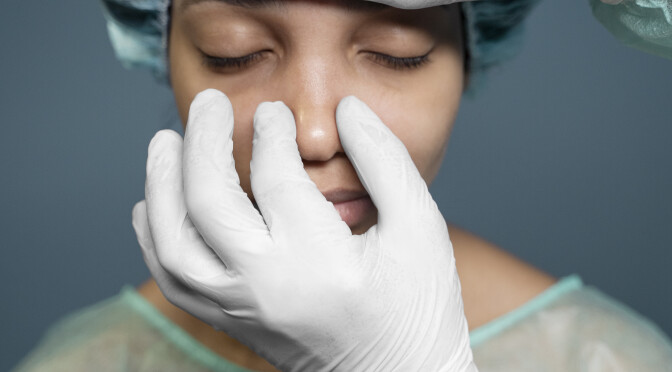Introduction
Welcome to our comprehensive guide to rhinoplasty recovery. We understand that undergoing a rhinoplasty procedure is a significant decision, and the recovery process plays a crucial role in achieving the desired results. We will provide you with valuable insights and expert tips to ensure a smooth healing journey after your rhinoplasty surgery.
Understanding Rhinoplasty Recovery
What Is Rhinoplasty?
Rhinoplasty, commonly referred to as a “nose job,” is a surgical procedure designed to enhance the aesthetic appearance and functionality of the nose. Whether you are opting for rhinoplasty for cosmetic or medical reasons, understanding the recovery process is vital for a successful outcome.
The Initial Days Post-Surgery
Immediately following your rhinoplasty surgery, it’s entirely normal to experience some level of discomfort and swelling. At [Your Clinic Name], we prioritize your comfort and a swift recovery. In this critical phase, there are essential points to keep in mind:
Follow Your Surgeon’s Instructions:
Your surgeon will provide you with detailed post-operative instructions, and it is of utmost importance to adhere to these guidelines meticulously. These instructions are tailored to your specific case and are vital for a smooth and successful recovery.
Managing Discomfort:
It’s common to experience mild pain or discomfort in the days immediately following your rhinoplasty. To ensure your comfort, your surgeon will prescribe appropriate pain medication. It is imperative to take these medications as directed by your surgeon to minimize discomfort.
Swelling and Bruising:
Expect some degree of swelling and bruising around your nose and eyes. These are typical post-operative side effects and should not cause undue concern. Over time, typically within the first few days, you will observe a gradual reduction in swelling and bruising.
Rest and Recovery:
Adequate rest is a critical component of the recovery process. During this initial phase, it is highly advisable to take time off from work or your daily routine to allow your body to heal effectively. Resting will expedite your recovery and promote optimal results.
Nasal Splints and Packing:
It’s essential to be aware that your surgeon may place nasal splints and packing inside your nose immediately after the procedure. These aids serve to support the newly sculpted nasal structures and minimize the risk of post-operative bleeding. Your surgeon will provide clear instructions on when these splints and packing will be removed, typically within the first week after surgery.
Avoid Strenuous Activities:
During the initial days post-surgery, it’s crucial to refrain from engaging in strenuous activities. Activities that involve physical exertion, such as heavy lifting, intense exercise, or anything that could inadvertently apply pressure to your healing nose, should be avoided. Protecting your nasal area from any trauma is essential for a successful recovery.
Sleep with Your Head Elevated:
To further reduce swelling and promote optimal healing, it is recommended to sleep with your head elevated during the initial recovery phase. Using extra pillows or an adjustable bed can help you maintain an elevated head position. This practice aids in minimizing fluid accumulation around your nose and eyes, contributing to a smoother and more comfortable recovery process.
The Recovery Timeline
Understanding the phases of rhinoplasty recovery is essential to prepare for what lies ahead. Your healing journey will be divided into distinct periods, each with its own set of milestones and considerations.
Week 1-2: Immediate Post-Surgery
In the first one to two weeks following your rhinoplasty, you can expect to focus on immediate post-operative care. During this period:
Return for a Follow-Up Appointment:
Your surgeon will schedule a follow-up appointment within the first week to assess your progress and ensure that everything is healing as expected. It’s crucial not to miss this appointment, as it allows your surgeon to make any necessary adjustments.
Nasal Splints and Packing Removal:
In many cases, nasal splints and packing inside your nose will be removed during this week, significantly improving your comfort.
Rest and Avoid Strenuous Activities:
Continue to prioritize rest during this phase. Avoid strenuous activities that could strain your healing nose. Focus on activities that are gentle on your body, such as light walking or reading.
Manage Discomfort and Monitor Swelling:
You may still experience some discomfort and swelling during this time. Follow your surgeon’s guidance on pain management, and remember that swelling is a natural part of the healing process.
Sleep with Head Elevated:
Continue sleeping with your head elevated to minimize swelling and promote proper healing.
Weeks 3-4: Early Recovery
As you enter the third and fourth weeks post-surgery, you’ll notice significant improvements:
Gradual Return to Light Activities:
With your surgeon’s approval, you can start to gradually return to light activities. However, it’s crucial to avoid any activities that could put your healing nose at risk.
Observe Swelling Reduction:
Swelling will continue to diminish, and you’ll begin to see the initial results of your rhinoplasty becoming more apparent.
Follow-Up Appointments:
Continue attending follow-up appointments as scheduled by your surgeon. These appointments are crucial for tracking your progress and addressing any concerns or questions you may have.
Your early recovery phase is a pivotal period when you’ll start to see the fruits of your rhinoplasty surgery. It’s essential to exercise patience and maintain a close partnership with your surgeon to ensure that your healing process stays on track.
In the subsequent months, your nose will continue to evolve, and we’ll delve into the details of your recovery journey in the next section.
In conclusion,
The journey to a successful rhinoplasty doesn’t end in the operating room; it continues through the crucial phase of recovery. The tips and guidelines outlined in this article are designed to help you navigate this healing process with ease and confidence.
Remember that patience is key during rhinoplasty recovery. Your body needs time to heal, and rushing the process can lead to complications. By following the advice provided, such as adhering to post-operative instructions, managing discomfort, and practicing proper skincare, you can promote a smoother healing experience.
Additionally, open communication with your surgeon is essential throughout the recovery journey. They are your best resource for addressing any concerns or questions that may arise. Always consult with them if you experience unexpected symptoms or have doubts about your progress.



